On Aug. 14, avid astrophotographers turned their attention to the sky a couple of hours before sunrise and captured a rare planetary “meet-up” between Jupiter and Mars.
It’s been over two years since Jupiter and Mars appeared this close together in the night sky and we’ll have to wait until 2033 to see such a close encounter unfold again.
With Jupiter shining at magnitude -2.2 and Mars at +0.8, Jupiter outshined Mars by a factor of nearly 16 to 1, but that didn’t stop the two from putting on quite the show.
“For a brief moment in time, it presented a fantastic celestial display,” photographer Josh Dury told Space.com in an email.
Dury captured this incredible photograph from the summit of Glastonbury Tor, overlooking the Mendips in Somerset, U.K.
“The photograph itself captures the perspective of the alignment alongside a once-in-a-lifetime chance of a Perseid meteor entering the frame,” Dury explained.
“It was a shock surprise to find this in my rushes and for me really delivers the magic and beauty of the cosmos with Jupiter and Mars being the two celestial objects that inspired me into the world of astronomy. A pertinent moment for sure,” Dury continued.
Astrophysicist Gianluca Masi of the Virtual Telescope Project livestreamed the conjunction from his view over Maciano, Italy and captured this beautifully detailed image of Jupiter and Mars sharing the same spot in a sky filled with stars.
The two planets came as close as within a quarter-of-a-degree, or about 50% of the angular size of the lunar disk.
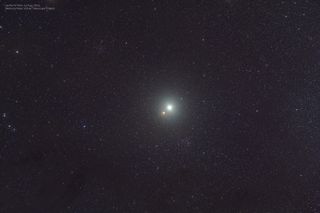
Lorenzo Di Cola also captured the conjunction over L’Aquila Italy. Both Jupiter and Mars were visible to the naked eye in the constellation Taurus during the cozy meet-up.
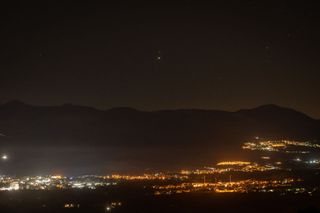
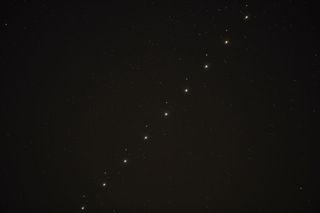
The photographer also took this amazing composition image made up of nine interval timer photos showing the two planets rising through the sky. Mars and Jupiter are visible in conjunction and if you look carefully you can even see some of Jupiter’s moons.
During the conjunction, Ganymede and Callisto were visible next to Jupiter, with Io and Europa situated between Jupiter and Callisto.
In the image below (to enlarge using the button in the top right corner) you can see bright Jupiter on the right and Mars on the very left. Now, focus on Jupiter. To the lower left of the planet, there is a tiny speck of light. This is Ganymede. Toward the upper right of the planet, you can just about make out a trail of three small dots of light. The closest one to Jupiter is Io, then it’s Europa and Callisto.
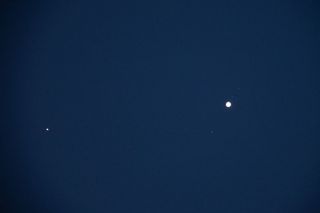
Many people also took to X (formerly Twitter) to share some incredible photos of the planetary meet-up.
Former astronaut Chris Hadfield shared his friend Andrew Yee’s photograph of Jupiter and Mars shining over Toronto, Canada.
Toronto, Jupiter and Mars last night. Beautiful photo by friend Andrew Yee. pic.twitter.com/UbKyO6lnb6August 15, 2024
Meanwhile, astronomer Damian Peach captured the duo during the morning twilight.
“Both planets are very close together with obvious colour difference easily visible to the naked eye. Aldebaran and The Hyades are at right. A striking sight!” Peach wrote in a post on X.
#Mars and #Jupiter captured this morning during morning twilight. Both planets are very close together with obvious colour difference easily visible to the naked eye. Aldebaran and The Hyades are at right. A striking sight! pic.twitter.com/ev4jbyQXFcAugust 15, 2024
Photographer David Costello really hit the jackpot with this one. Jupiter, Mars and the northern lights were all visible from Wicklow, Ireland!
The Aurora Borealis and the Jupiter / Mars conjunction from Wicklow last night.#AuroraBorealis #Jupiter #Mars #Wicklow #Ireland #Astronomy #photography #NorthernLights https://t.co/TdkUxToBpG pic.twitter.com/6NIDVOnyIIAugust 14, 2024
If you’re inspired by these photographs and want to learn more about photographing the night sky, our astrophotography for beginners and top tips for composing astrophotography guides can help. If you want to take an even deeper look at the night sky, be sure to check out our best telescopes roundup.
If you capture a stunning photo or video of the night sky and want to share them with Space.com for a possible story, send images, comments on the view and your location, and usage permissions to spacephotos@space.com.










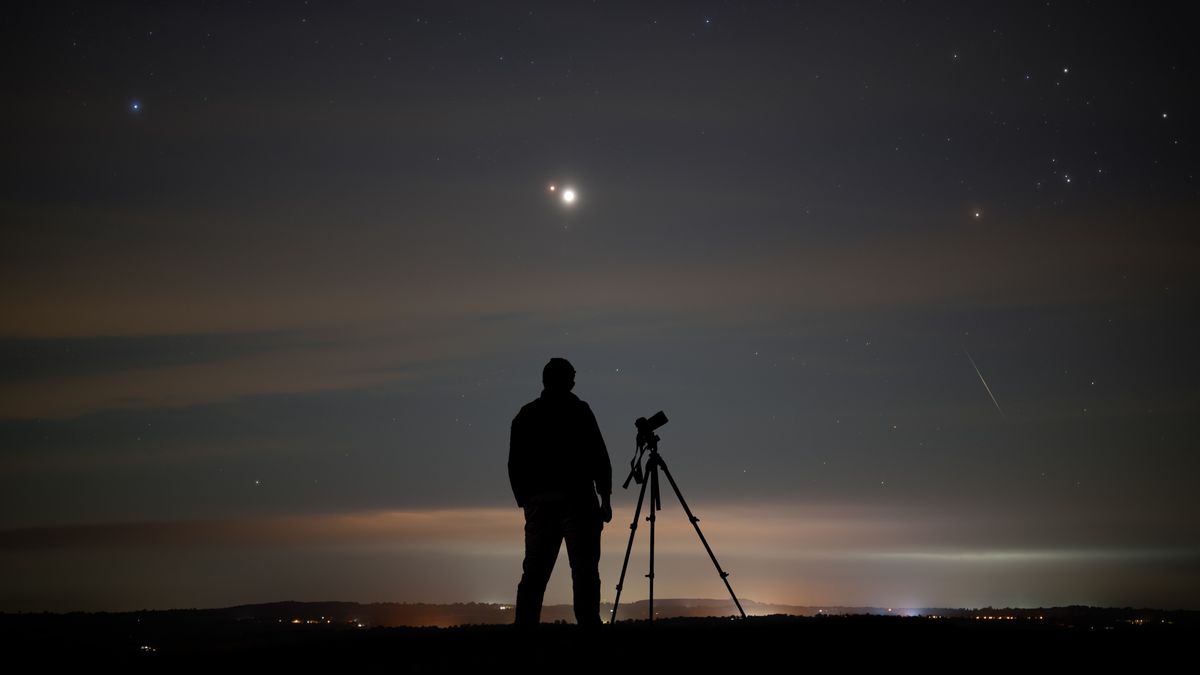










Discussion about this post